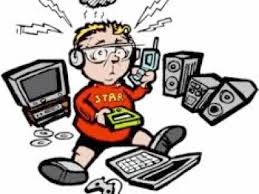4 ways this technology can help improve your life.
Betting that AI could lighten the clinician load.
Home Instead goal: Applying technology to make home care more efficient.
Mountain Empire serves about 3,000 people in Appalachia providing meals, transportation and personal care.
Five main obstacles that could hinder the responsible adoption of AI-based technologies and propose strategies to address them.

 First there was too much information. At the forecasters became more insistent that Irma would hit Florida –
First there was too much information. At the forecasters became more insistent that Irma would hit Florida –  It’s summer – and the reading is easy. But there are many opportunities to fall out of touch with what’s happening in the world of tech and aging – for example, in the market innovation category, most recently there have been
It’s summer – and the reading is easy. But there are many opportunities to fall out of touch with what’s happening in the world of tech and aging – for example, in the market innovation category, most recently there have been  Dial-up lives on -- and not necessarily out of preference. You may have read this last week:
Dial-up lives on -- and not necessarily out of preference. You may have read this last week:  Technology gadgets – ecosystem incompatibility. Look around a very digital home filled with parallel and incompatible ecosystems – and sigh. So many parts, so little integration – it seems vendors compete to death to NOT work together. Consider
Technology gadgets – ecosystem incompatibility. Look around a very digital home filled with parallel and incompatible ecosystems – and sigh. So many parts, so little integration – it seems vendors compete to death to NOT work together. Consider  Surveyed about technology, but untrained in its use. Does this describe someone you know? According to Pew’s latest report,
Surveyed about technology, but untrained in its use. Does this describe someone you know? According to Pew’s latest report,  Tech adoption of the 65+ is now buried in a Pew appendix. If age were an ethnic or racial minority, outrage at technology ageism would be vocal and constant. The 65+ are a
Tech adoption of the 65+ is now buried in a Pew appendix. If age were an ethnic or racial minority, outrage at technology ageism would be vocal and constant. The 65+ are a  So many head-spinning numbers to describe the 50+ Consumer. In making the case for the 'Fintech' innovation market opportunity, AARP’s new
So many head-spinning numbers to describe the 50+ Consumer. In making the case for the 'Fintech' innovation market opportunity, AARP’s new